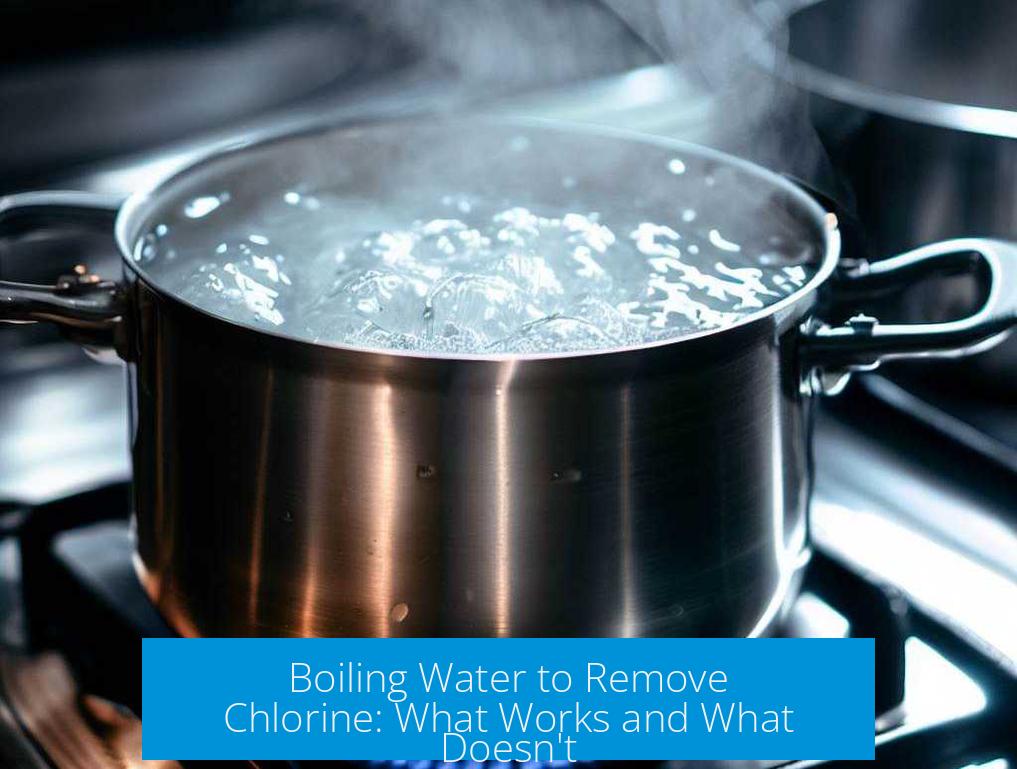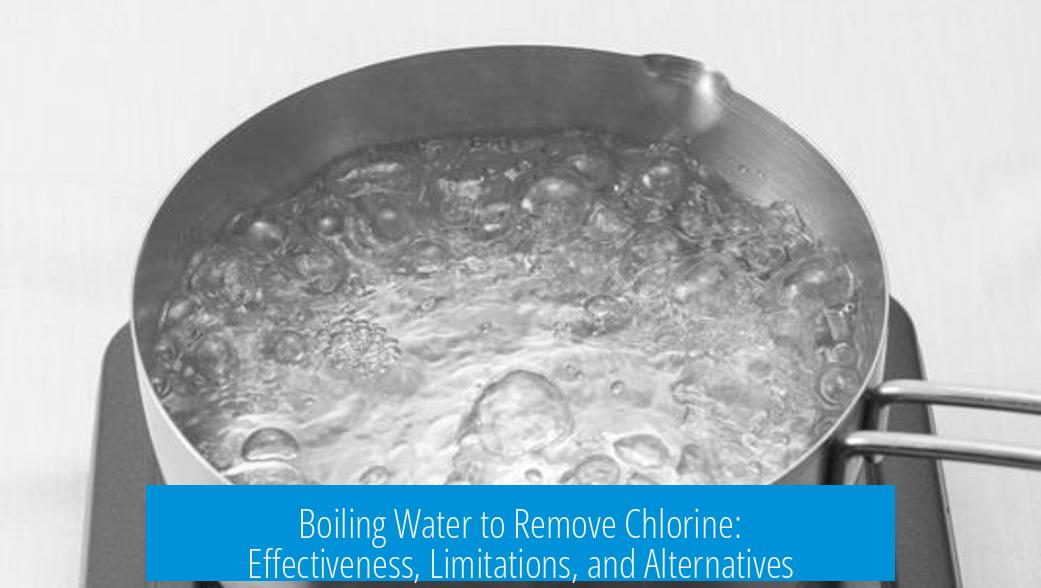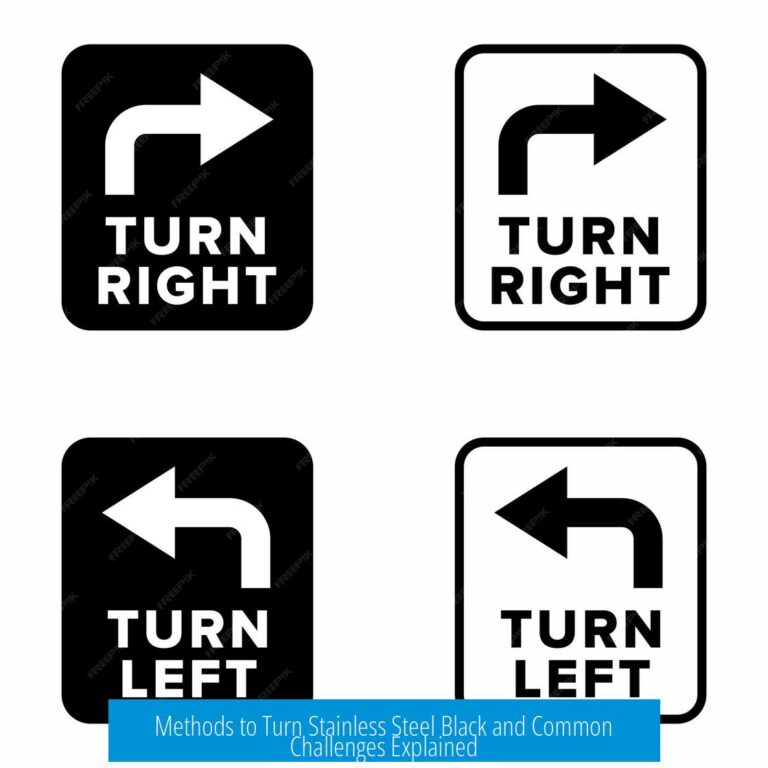Boiling Water to Remove Chlorine: What Works and What Doesn’t

Boiling water can remove chlorine gas (Cl2) from water by evaporation, but it does not eliminate hypochlorite (OCl-) or chloride ions (Cl-), which remain dissolved. This limits boiling as an effective or cost-efficient method for full chlorine removal.
How Boiling Effects Chlorine in Water
Chlorine is added to water mainly for disinfection. In water, chlorine exists in equilibrium between molecular chlorine (Cl2), hypochlorous acid (HOCl), and hypochlorite ion (OCl-). The distribution depends on pH:
- Low pH: Mostly Cl2 (molecular chlorine, volatile)
- Neutral to slightly acidic pH: Mostly HOCl (weak acid)
- High pH: Mostly OCl- (hypochlorite ion, soluble)
When water is heated to boiling, the solubility of gases—including Cl2—decreases. Boiling drives off dissolved chlorine gas as steam carries it from the solution, similar to steam distillation.
This removal of Cl2 shifts the chemical equilibrium, causing some hypochlorous acid to convert back into molecular chlorine, which then also evaporates. Over time, the process depletes chlorine gas content in the water.
What Boiling Does Not Remove
Hypochlorite ions (OCl-) and chloride ions (Cl-) remain dissolved after boiling. These species have high water solubility and do not evaporate with steam. Therefore, boiling cannot eliminate all chlorine-containing species.
Moreover, boiling evaporates water volume, concentrating these ions in the remaining solution. This can increase the apparent concentration of chloride ions, opposite to the intended purification.
Practical Limitations of Boiling for Chlorine Removal
- Boiling is energy-intensive and time-consuming, making it costly for routine water treatment.
- It does not guarantee complete chlorine removal due to non-volatile species remaining.
- Boiling may remove disinfecting chlorine but not chloramine, a common chlorine compound requiring longer or different treatments.
- Increased ion concentration after water evaporation can affect taste and chemistry of the water.
Because of these drawbacks, boiling is less practical than other chlorine removal methods for typical household use.
Better Alternatives to Boiling for Removing Chlorine
Carbon filtration is a widely recommended alternative. Activated carbon filters such as those used in Pur or Brita pitchers adsorb chlorine and reduce its concentration effectively.
- Activated carbon reduces chlorine from Cl2 and chloramine compounds.
- It improves water taste by removing chlorine’s bitterness and odor.
- Carbon filters also remove some chlorine disinfection by-products.
- Filter cartridges are easy to use and lower in cost than boiling fuel or electricity consumption.
Sodium thiosulfate and hydrogen peroxide treatments chemically neutralize chlorine and chloramine. They work faster and more completely but are typically used in aquariums or industrial applications rather than daily household use.
Additional Noteworthy Insights
- Simply leaving water exposed to air can let chlorine gas volatilize over hours to days.
- Boiling also helps remove chloroform, a volatile disinfection by-product, but microwaving may be more effective.
- Boiling’s inability to remove chloramine requires special consideration if water contains that compound, as chloramine is more stable and less volatile.
Summary Table: Chlorine Species and Removal by Boiling
| Chlorine Species | Volatility | Removes by Boiling? | Effect of Boiling |
|---|---|---|---|
| Chlorine Gas (Cl2) | High | Yes | Evaporates into air, decreases in water |
| Hypochlorous Acid (HOCl) | Moderate (depends on equilibrium) | Partially, through equilibrium shift | Converted to Cl2 then evaporates |
| Hypochlorite Ion (OCl-) | Low (non-volatile) | No | Remains dissolved, concentration may increase |
| Chloride Ion (Cl-) | None | No | Concentration increases as water evaporates |
Key Takeaways
- Boiling reduces chlorine gas by evaporation but does not remove soluble hypochlorite or chloride ions.
- Hypochlorite and chloride stay dissolved, which may concentrate with boiling.
- Boiling is energy-inefficient and only partially effective for chlorine removal.
- Activated carbon filtration offers a more effective, practical chlorine reduction method.
- Other chemical treatments better for chloramine or complete dechlorination.
Can boiling water completely remove chlorine?
Boiling can remove chlorine gas (Cl2) by evaporation. However, it does not remove hypochlorite or chloride ions, which remain dissolved in water. Some chlorine forms stay behind, so boiling alone is not fully effective.
Why does boiling water sometimes increase chloride concentration?
Boiling evaporates water but not chloride ions. As water volume decreases, chloride concentration rises, making boiling counterproductive if chloride removal is the goal.
How does boiling remove chlorine chemically?
Chlorine gas (Cl2) in water is volatile and escapes when heated. This shifts chemical equilibrium, causing more chlorine gas to form and evaporate. Hypochlorite ions do not evaporate.
Is boiling water the best method to remove chlorine taste?
No, boiling is not the most efficient or cost-effective method. Carbon filters like Brita or Pur are better at reducing chlorine taste by adsorbing chlorine and its compounds.
Can boiling remove chloramine from water?
Boiling can remove chloramine but is less effective and slower than chemical treatments. Heat and light can help, but special methods like sodium thiosulfate are usually needed.





Leave a Comment